By now, most of us in the EV world have either experienced or heard about regenerative braking. It’s this surprisingly pleasant feature that helps recharge your battery every time you ease off the accelerator, at least when the road is dry. But in snow and ice? That’s where things get complicated. And today, thanks to a story from Tesla owner Rich Gill, we’re going deep into the unexpectedly slippery side of regenerative braking and whether it’s time for Tesla to rethink how it handles winter driving modes, especially for drivers who didn’t grow up in the Arctic.
Here’s what Rich shared recently in the Tesla Tips & Tricks group on Facebook:
“I purchased a new 2024 Tesla Model Y Long Range last year, and added the acceleration boost. Almost a year later I totaled it when I let off the accelerator, while driving slowly in a snow storm; it just went sideways and off into a ditch. I believe the regenerative braking locked the wheels and turned it into a sled.
I was planning on getting the exact same Model Y LR, just a year newer. That is until, I realized the performance models were nearly $9,000 off. So it wound up being cheaper than the Model Y LR, and I wouldn’t have to spend the extra 2k for the acceleration boost. Score!
Now that I have it, it seems slower than the Model Y LR. Anyone ever experience that? Maybe it has to do with the wheels being a smaller diameter? It’s most notable when I accelerate, slow down a bit, and accelerate again. It’s like it has less juice on the second hit, where the LR didn’t seem to have that much of a decline.”
Now that’s a story worth slowing down for - regen pun intended.
This isn’t just about one Tesla in a ditch. Rich’s experience opens up a broader and very real concern for EV drivers — especially those new to driving in slippery conditions. Regenerative braking is a revolutionary feature, no doubt about that. If you’re not familiar with how it works, take a moment to read this breakdown on regenerative braking and how it functions in EVs and Tesla vehicles. The article explains the fundamentals and even goes into why it’s generally great — except when it isn’t.
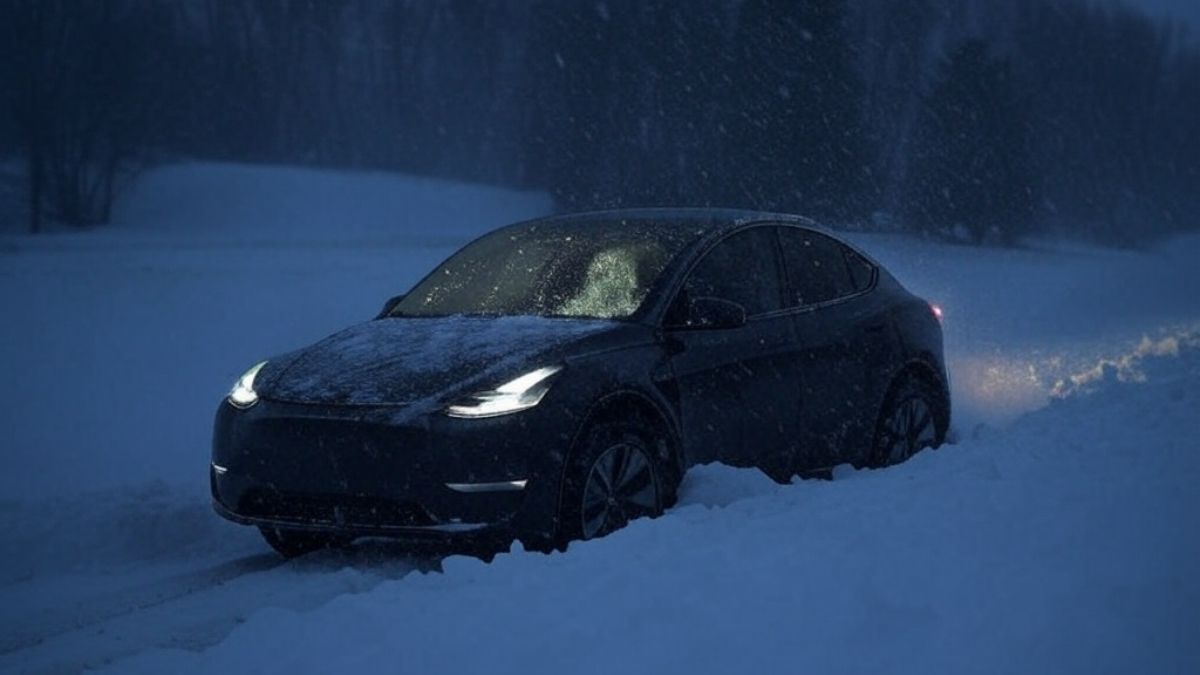
What Rich described — the car suddenly going sideways after lifting off the accelerator — is an example of how unchecked regenerative braking can feel unlikeable when traction is already compromised. That "sled" moment he experienced sounds eerily familiar to some Model 3 and Y owners in snowy areas.
Torleif Theodorsen, a Tesla driver from Norway (a country that basically lives in a snow globe for half the year), had this to say in the same thread:
“I am Norwegian and must say that I am surprised that you perceive the regen in relation to the driving conditions. Test friction by braking hard and assess the speed accordingly. Winter tires are a must.. you don't go out in slippers, do you?”
He's right. Tires matter. But even with winter tires, drivers report strange behavior when regen kicks in on black ice or powdery roads. Some even say that Teslas need a specific slippery-snow setting — something better than the existing Off-Road Assist. Yes, Off-Road Mode exists, and some Model Y owners have used it with mixed results in the snow. But does it really adjust regen braking or just tweak traction control? Tesla hasn’t made that clear, which adds to the mystery — and the risk.
Kimberly Brinson chimed in with a solid piece of advice:
“It’s best to turn off regen braking in snowy conditions. Glad you were ok. Hard to tell from your pictures but it didn’t look like much damage unless it damaged the batteries.”
Some drivers, especially in Norway, have expressed similar concerns. James Hooker added:
“I read lots of complaints about the regen braking on slippery winter roads here in Norway. I personally haven’t had an issue yet (4 winters with my M3LR), so I’m not sure if it’s down to different tires, technique or what. But definitely lots of people saying the regen should be able to be disabled on snow and ice.”
The idea of adjustable regen braking settings for snow makes sense. In fact, it mirrors what Tom McKee, another Tesla owner, did manually:
Advertising “I have a 2024 Tesla Model 3 Performance and drove it in the snow a lot this past winter. Impossible to drive in any of the standard modes because of the very real danger I faced when letting off the gas. But, thankfully, since it’s a Performance, I just made a Track Mode setting (I just named it Snow Mode) where I turned the regenerative brakes off all the way with the slider. I used it every time the roads were the least bit slippery and I felt 100% safe.”
He even created a separate “Fun Mode” for snowy parking lots. That’s practical and kind of brilliant. But it raises a question: why should drivers need to create a workaround for something that could be a factory option? Shouldn't safety in hazardous driving conditions be part of the baseline, not a DIY project?
While Rich's accident stemmed from an unexpected loss of traction, not all Tesla owners face such dramatic situations—some confront unusual dilemmas in their own garages. One Tesla mechanic recently shared how he avoided performing a $2,500 suspension repair on his own Model Y, not because he couldn’t do it, but because he didn’t want to accidentally void the car’s warranty. His story opens a window into the unlikely worries faced by EV owners who are mechanically inclined but caught between Tesla’s strict service policies and the high cost of dealership repairs. Here’s what happened and why even experienced mechanics are thinking twice about wrenching on their own Teslas.
This brings us to a wider issue in EV design: adaptive driving modes.
Many modern vehicles — especially luxury gas and hybrid SUVs like the Kia Sorento Plug-in Hybrid - come equipped with automatic terrain modes that adjust throttle response, brake sensitivity, and traction in real time. Tesla's software-based interface means they could roll out a true Snow Mode in an over-the-air update - if they wanted to.
And here’s where we can connect a larger trend: the increasing reliance on software settings in EVs to solve mechanical problems. While this offers flexibility, it can also lead to confusion. For newer EV drivers, the idea that your car may suddenly decelerate when you lift your foot - and not because of physical brakes - can be startling. Especially when it causes a spinout.
There’s also an ethical question to ask: Should automakers be commercializing performance add-ons (like Tesla's Acceleration Boost or FSD) while not offering free, life-saving driving modes for dangerous conditions?
Rich’s upgrade story adds another twist. After totaling his Model Y LR, he realized the Performance model was actually cheaper due to price drops — and it included faster acceleration without having to pay extra for the boost. But now, he says it feels slower, possibly due to different wheel diameters or power management changes. These kinds of software-versus-hardware inconsistencies are worth watching as Tesla continues to update performance through code.
And Rich isn't alone. In another real-world story, a Tesla Model 3 owner described ditching gas cars entirely after getting used to the smooth power delivery of EVs. But even he admits that regen takes some getting used to — and in bad weather, it's not always your friend.
So what can help?
Beyond snow tires, one answer may be simpler user access to customizable drive modes - like sliders for regen strength, throttle responsiveness, or automatic weather-detection. If software defines so much of Tesla’s performance identity, then let it also define safety on unpredictable winter roads.
And remember, regenerative brakes do reduce wear on traditional brake pads, but it’s not a myth that they can behave unpredictably in the wrong conditions. For more on that, here’s a solid breakdown on whether regenerative braking truly replaces traditional brakes — or if that’s just hype.
Bottom line? Electric vehicles can be fun, fast, and futuristic - until they start behaving like a sled in the middle of a snowstorm. Rich’s experience reminds us that winter driving is still a real-world test, no matter how advanced your tech is. Maybe it’s time Tesla gave regen braking the same seasonal upgrade that boots and coats get.
Have you had a moment where regenerative braking surprised you in snow or ice? Do you think Tesla should offer a real Snow Mode that adjusts regen and throttle response automatically? Let us know your experience in the comments below. Your feedback might just help another driver avoid a snowy slide into a ditch.
Armen Hareyan is the founder and Editor-in-Chief of Torque News. He founded TorqueNews.com in 2010, which since then has been publishing expert news and analysis about the automotive industry. He can be reached at Torque News Twitter, Facebook, Linkedin, and Youtube. He has more than a decade of expertise in the automotive industry with a special interest in Tesla and electric vehicles.
Image source: Grok.


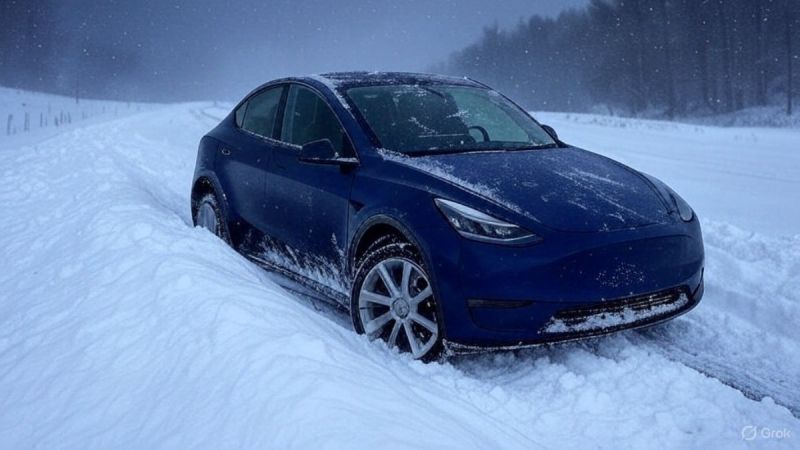




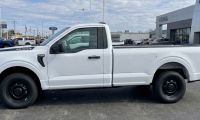
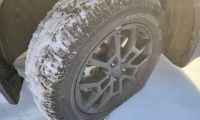
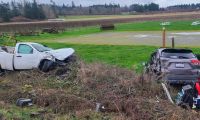
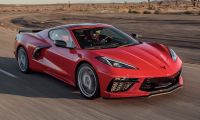
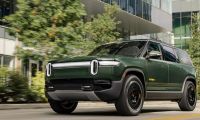
Comments
Why on earth would anyone…
Permalink
Why on earth would anyone replace a totaled Tesla with another Tesla? Who does that, right?
You done?
Permalink
In reply to Why on earth would anyone… by Buzz Wired (not verified)
You done?
With Tesla, you mean? Yes…
Permalink
In reply to You done? by Dss (not verified)
With Tesla, you mean?
Yes.
Why do you ask?
EXACTLY....!!!!! I was…
Permalink
In reply to Why on earth would anyone… by Buzz Wired (not verified)
EXACTLY....!!!!! I was wondering the same thing. I am NOT a Tesla fan, although I used to be. I am a fan of Electric Vehicles, just NOT the ones made by Tesla. Tesla's reliability and quality controls are horrible, among the WORST in the automotive industry...!!!!! Their notoriously random price hikes are NOT a positive feature of the company's practices, and the political shenanigans of it's "Madman" CEO, is way past "UNACCEPTABLE"...!!!!
Because it's a TESLA!
Permalink
In reply to Why on earth would anyone… by Buzz Wired (not verified)
Because it's a TESLA!
Tesla owners are not very…
Permalink
In reply to Why on earth would anyone… by Buzz Wired (not verified)
Tesla owners are not very smart. That is why.
My Hyundai Ioniq 5 has a…
Permalink
My Hyundai Ioniq 5 has a snow mode that reduces regen to the lowest setting, as well as changing a bunch of other settings. I can also manually turn regen all the way off anytime I want. I'm surprised Tesla does not have a winter drive mode that's similar.
Never had an issue with…
Permalink
Never had an issue with regen breaking losing traction. On the flip side I've floored it and not has an issue either.
I have a long range Model Y,…
Permalink
I have a long range Model Y, and when I git black ice at 130 kph one winter night I feel like my regen braking saved me and my family. The capability of it on the Canadian winter and ICE has been amazing.
I trust regen braking far more than disc brakes.
Drove my Y for 4.5yrs and…
Permalink
Drove my Y for 4.5yrs and never have a problem with Regen brake on ice and snow. Actually I like regen brake on slippery surfaces, it just works like a reverse threshold or engine braking and as long as you moderate and don't lift foot off completely at speed. If you spun out and totaled it, you probably don't have the skills, right tires, and drove too fast.
Hey take it easy with this…
Permalink
Hey take it easy with this.
If you were in China Tesla would sue you for defamation like they've done a couple of times already.
What a crap company
I've posted about this…
Permalink
I've posted about this several times in FB groups. It's a big issue, especially when going downhill in the snow. And for all those saying turn off regen braking, you don't know what you're talking about. That option existed in older Teslas but is not available on standard or long range Y & 3. I own both. I've read that the new refreshed 3 & Y have this option now but I can't confirm that.
I've had exactly the same…
Permalink
In reply to I've posted about this… by Derek Oldfield (not verified)
I've had exactly the same problem; downhill, heavy snow, icy underneath, and my Model Y has on several occasions on different trips locked up the wheels and threatened to spin out on regen. Needless to say, this was really disconcerting for my passengers. I frequently drive from Vancouver to Calgary or into the BC interior. The car has great traction and stability generally, but Regen braking is a lurking danger. I have good quality snow tires. The Tesla service people seemed to intimate that my tires were TOO good and maybe the OEM winters would be a better option. That's patently ridiculous.
You used to be able to adjust the Regen (and I believe the manual hasn't been updated yet to reflect that Tesla removed that feature) which would definitely help in these conditions. I'll take safety over efficiency any day.
I have a 2026 model Y, got…
Permalink
In reply to I've posted about this… by Derek Oldfield (not verified)
I have a 2026 model Y, got it about a month ago, haven’t driven on ice yet. In browsing through the menu, I found a control for driving on slippery surfaces. I need to go back and check it out in detail now.
I love my Chevy Bolt. It is…
Permalink
I love my Chevy Bolt. It is superior to Tesla in this regard. It uses the brake pedal to do regen breaking and you can set it to feel like you're driving and ICE. Same for my Dad's Ioniq.
I've had mine momentarily…
Permalink
I've had mine momentarily slip a little when letting off on slippery roads but it the traction control kicks in and it recovers itself very quickly.
He just doesn't know what…
Permalink
He just doesn't know what regen is and is looking for something to blame for his inability to drive.
Regen braking is found on a lot more cars than Teslas and it's very simple: the electric motor resists instead of pushing the drive motor, and that causes the car to slow - gradually.
If you drive windows down with everything off in a quiet place, you know the sound your car makes it wants to "lock up" - bring to a complete stop - the wheels. You can hear the friction brakes engage.
In other words, it's literally impossible for Regen braking to lock up the wheels. Bringing them to a full stop is always a job for friction brakes.
Regen is just new and different so people that don't know things blame it.
I've driven EVs and Hybrids…
Permalink
In reply to He just doesn't know what… by Chris Moschini (not verified)
I've driven EVs and Hybrids for years. I literally live in the snowiest place in the Northeast US. The Regen on my MYLR absolutely allows the vehicle to lose traction momentarily when letting off the accelerator when going downhill in the snow or ice. He shouldn't have described it as locking up, but losing traction for even a second is a second too much.
Don't discredit the very real limitation of not being able to turn off or turn down Regen on a Tesla.
I assume that you have read…
Permalink
In reply to He just doesn't know what… by Chris Moschini (not verified)
I assume that you have read the old classic “The Marching Morons. If not, I think you will really enjoy it!
What you are talking about…
Permalink
What you are talking about is not Regen breaking, it is one pedal driving, or automatic Regen breaking. All hybrids, and EVs have Regen breaking (just means using the electric motor in place of the breaks when you apply the break petal, or any other reason they get applied). Regen breaking by itself does not cause the issues you are talking about in this article. One pedal driving is not on any hybrids, and on most EVs is adjustable (it is on my kia Nero ev). Get your terms right please.
I've driven an EV or Hybrid…
Permalink
I've driven an EV or Hybrid for the last 15 years with regenerative breaking. And every year we would drive them to the snowy mountains in the winter for skiing. Never had them lock up a single time including in my 23 MYLR. Winter tires was the only thing that I had on my MYLR that isn't stock.
Also, Regen braking should not be possible to lock your wheels. All that happens is that a current is no longer passed through coils in the motor to turn the wheels. This results in the free-spinning wheel still spinning the motor which generated a current due to the magnets. This robs your wheels of energy and slows it down, similar to how friction slows your wheels down when idling the engine in an ICE. Unlike a conventional break Regen braking doesn't physically touch the wheels to be able to lock it up.
That said though, either the OP let go of the accelerator completely and the software kicked in the physical brakes (due to perceived obstruction) or they were going to spin out anyways because there was zero traction on the ground regardless of spinning wheels or not.
For the physical brakes kicking in, I have had that happen once when it was snowing. The car thought there was something on the road and wanted to brake as part of Enhanced FSD. Thankfully the road was plowed and salted and it was just starting to come down so I didn't spin out. But I had my foot steady on the accelerator the entire time, it just went beeping like crazy and kicked in the brakes. A particular snow flake must have looked like a car or something to the front cameras.
This is a tough one. If one…
Permalink
This is a tough one. If one understands how the care generally works, regen braking is probably just awesome - like always being in a good gear in my manual transmission CJ-5 (which I ice raced on frozen lakes in the bare rubber category, never touching the brakes).
That said, the amount of technology present in the Tesla, there shouldn't be a requirement for a driver to "know how it works." It should 100% have an anti-skid feature built in.
Regenerative braking does…
Permalink
Regenerative braking does not and cannot lock the wheels. Its braking effort diminishes as the wheels slow down, and is often nonexistent when the wheel speed drops below a few miles per hour.
That said, regen braking can cause a loss of traction condition when the braking force exceeds the available friction force of the tire. This is easily the case with higher regen settings, especially with one pedal driving modes.
Best practice is to not use one pedal drive in reduced traction conditions and turn the level of regen braking at no pedal input to a minimum. It's okay to still have regen braking available on the brake pedal, just use the settings that provide the most coast with no pedal input.
Sounds like he didn't…
Permalink
Sounds like he didn't feather the pedal but just took his foot all the way off, which is like hitting the brakes. Newb mistake.
I work at a ski resort that…
Permalink
I work at a ski resort that has a 14-16% grade for about 4 miles. I was very concerned about the decent on the worst snowy days. I have a MYLR and don’t have track mode to adjust settings. I found that ‘roll mode’ seems to give me slow speed friction brake control. I am getting more trusting of regen - seems like when it senses a skid it pauses the regen. On the worst snowy days it is a 3 mph controlled slide for four miles. I have wanted to burn my underwear when I got home.
I work at a ski resort that…
Permalink
I work at a ski resort that has a 14-16% grade for about 4 miles. I was very concerned about the decent on the worst snowy days. I have a MYLR and don’t have track mode to adjust settings. I found that ‘roll mode’ seems to give me slow speed friction brake control. I am getting more trusting of regen - seems like when it senses a skid it pauses the regen. On the worst snowy days it is a 3 mph controlled slide for four miles. I have wanted to burn my underwear when I got home.
My own feelings after owning…
Permalink
My own feelings after owning a model Y for 4 years is that for the designers of Tesla, winter driving is an afterthought, given not much attention. When you live and work in California or Texas, snowy roads rarely cross your mind. FSD also does a poor job in snow, not recognizing lanes and such.
Maybe off-Road Assist might…
Permalink
Maybe off-Road Assist might help?? There's also a slip start feature, but that looks like it's for after you've slid off the road into a ditch.😏
Maybe off-Road Assist might…
Permalink
Maybe off-Road Assist might help?? There's also a slip start feature, but that looks like it's for after you've slid off the road into a ditch.😏
People need to know how to…
Permalink
People need to know how to drive in the snow whether it's an EV or not. You can't suddenly floor the accelerator or slam on the brakes when driving through snow. Likewise, you need to let your foot off the accelerator pedal gently in snow, and should be doing the same in everyday driving with an EV with strong regen.
A decade ago, people used to recommend setting regen to low in snowy conditions. These days, I don't hear people saying that, presumably because they expect people to know how to drive appropriately for conditions.
Pagination